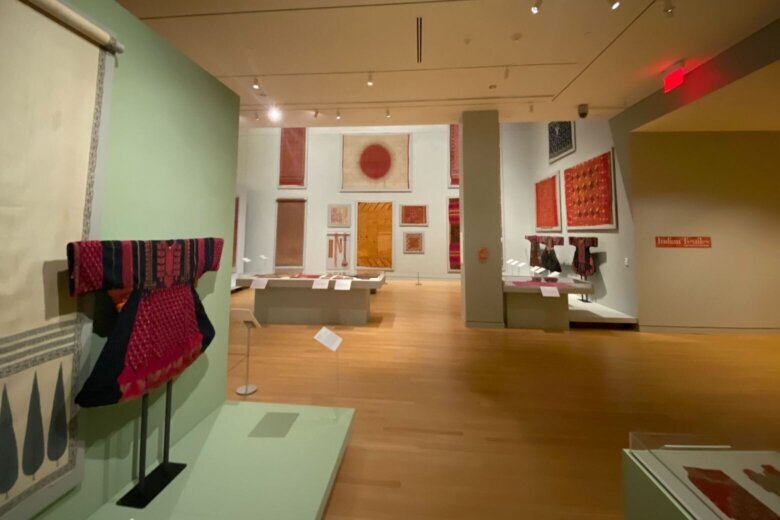
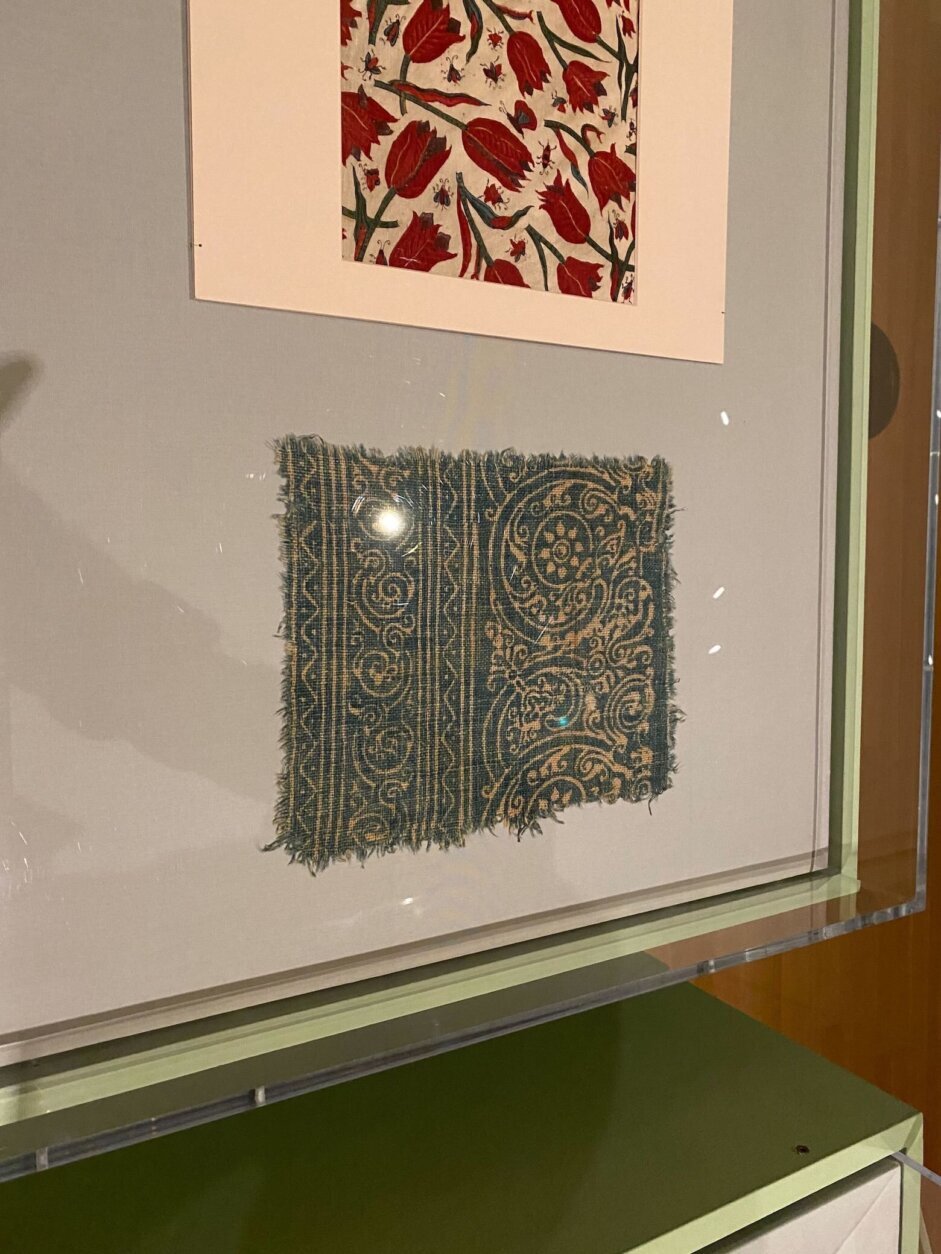
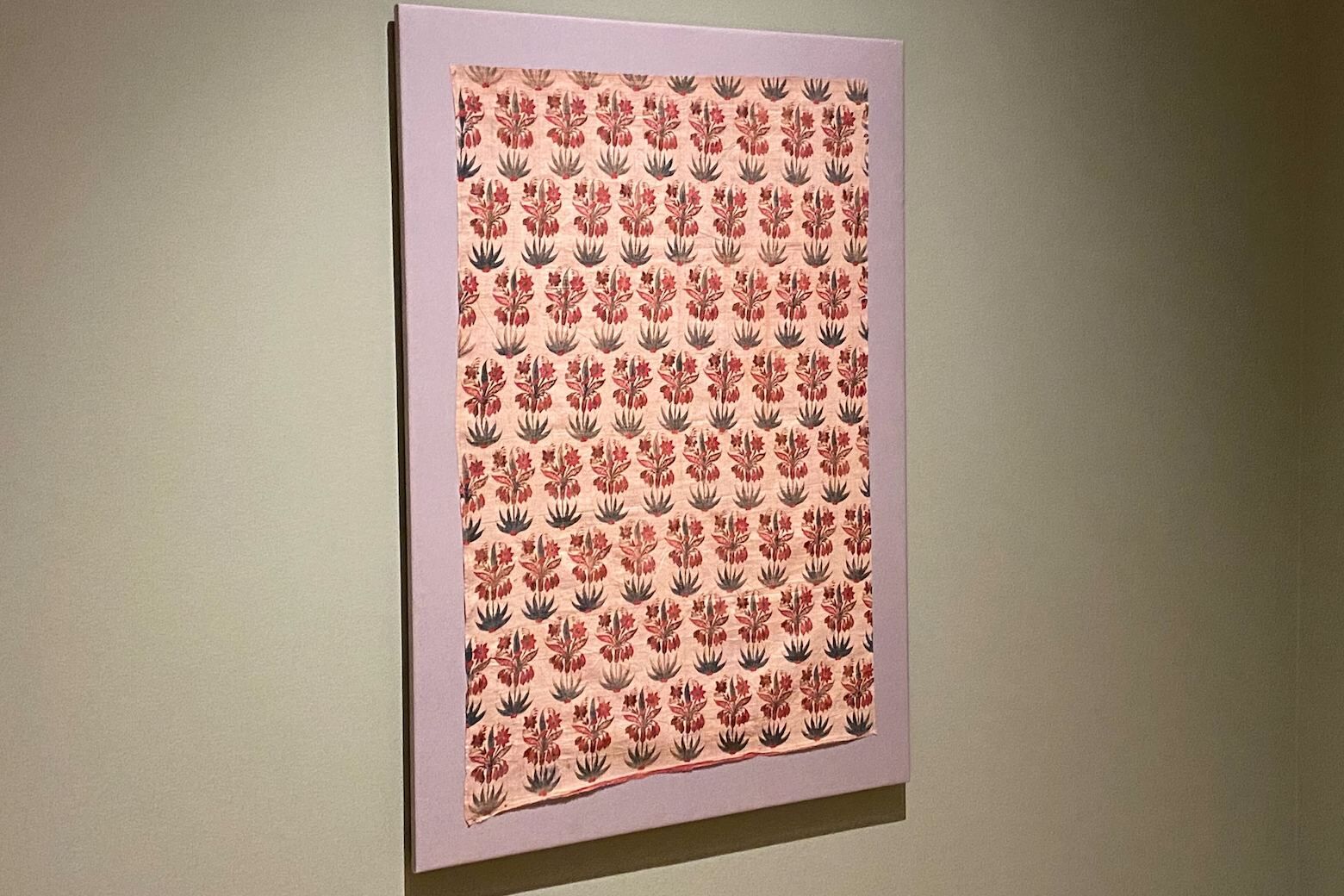
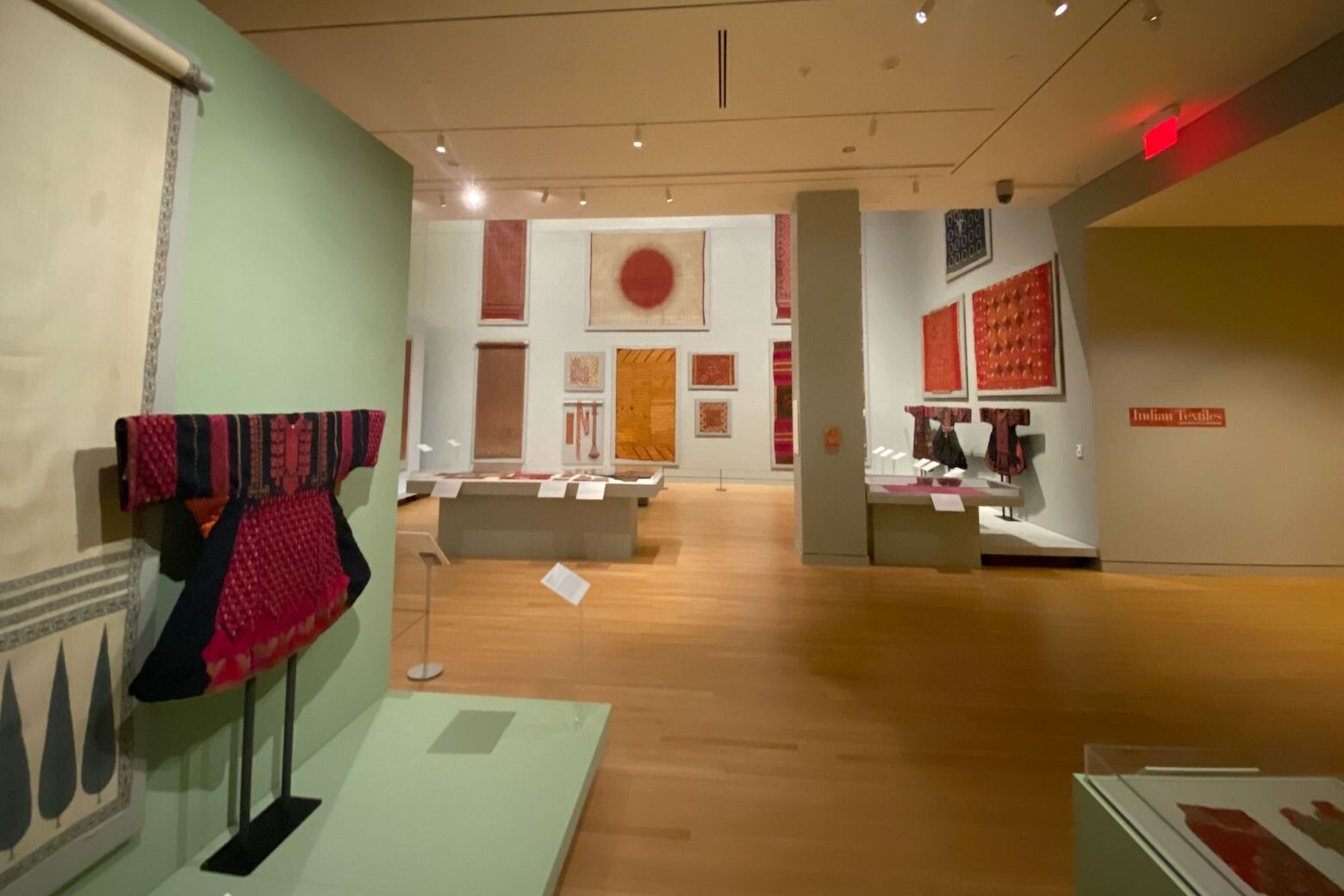
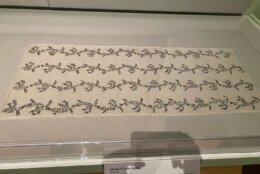
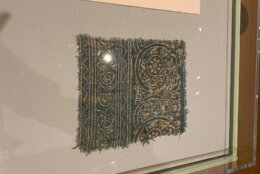
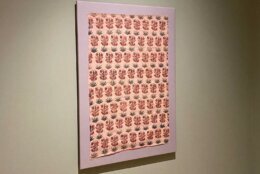

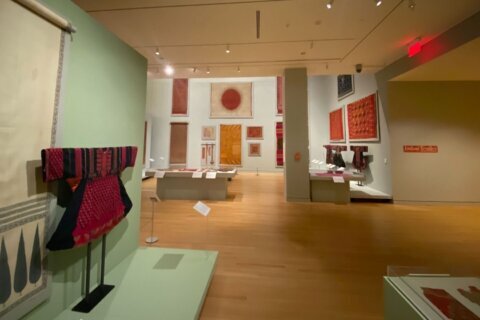
Narrative tapestries and unique beetlewing garments are on display at a new exhibit at The Textile Museum at George Washington University.
The exhibit “Indian Textiles: 1,000 Years of Art and Design” highlights the intricate and stunning cloth work from India, which is celebrating its 75th anniversary of independence.
“We have over 90 masterworks created over a period of about 1000 years,” said the Textile Museum Curator Lee Talbot.
It is comprised from the museums own collection of Indian works along with the private collection of Karen Thakar.
The showing covers two floors of the museum and features everything from a yards long narrative tapestry depicting a poets journey across India, to floral patterned tunics.
Talbot said the oldest piece in the collection is actually even predates the title of the exhibit.
“It dates to about the eighth century, so it’s about 1,200 years old. It is a fragment of Indian printed cotton that was found in Egypt,” Talbot told WTOP. “Interestingly, India has a very old textile tradition, but the climate is not really conducive to the survival of textiles. So the oldest textiles that we have from India were actually found in Egypt.”
Over the ages, artists in India have become masters at different textile techniques. The Indian subcontinent is also rich with natural resources for textile fibers and dyes.
“So those natural resources combined with millennia of human ingenuity have resulted in a really wide range of fine fabrics,” said Talbot. “They’re particularly well known for their cottons, and cotton is a particularly hard fiber to dye.”
Talbot said Indian textile artists figured out early on that, in order to dye cotton, they needed to apply metallic salts to the garment.
Between the craft and the science, the results have awed many over the millennia. Talbot made his case pointing to a piece from 1667 that belonged to an Indian ruler.
“So imagine if you know that technology. You look at something like this, and you can just see the hundreds of hours, incredible skill and craftsmanship that would go into making something like that,” said Talbot.
One of the more fascinating pieces in the exhibit doesn’t involve dye at all. It is embroidered with beetle wings and has been perfectly preserved for about 200 years.
“Beetle wings are extremely fragile. They don’t survive very long. They can shatter, but also beetle wings are very delicious to other insects, and so they tend to be eaten,” said Talbot.
The exhibit “Indian Textiles: 1,000 Years of Art and Design” runs through June 4.

